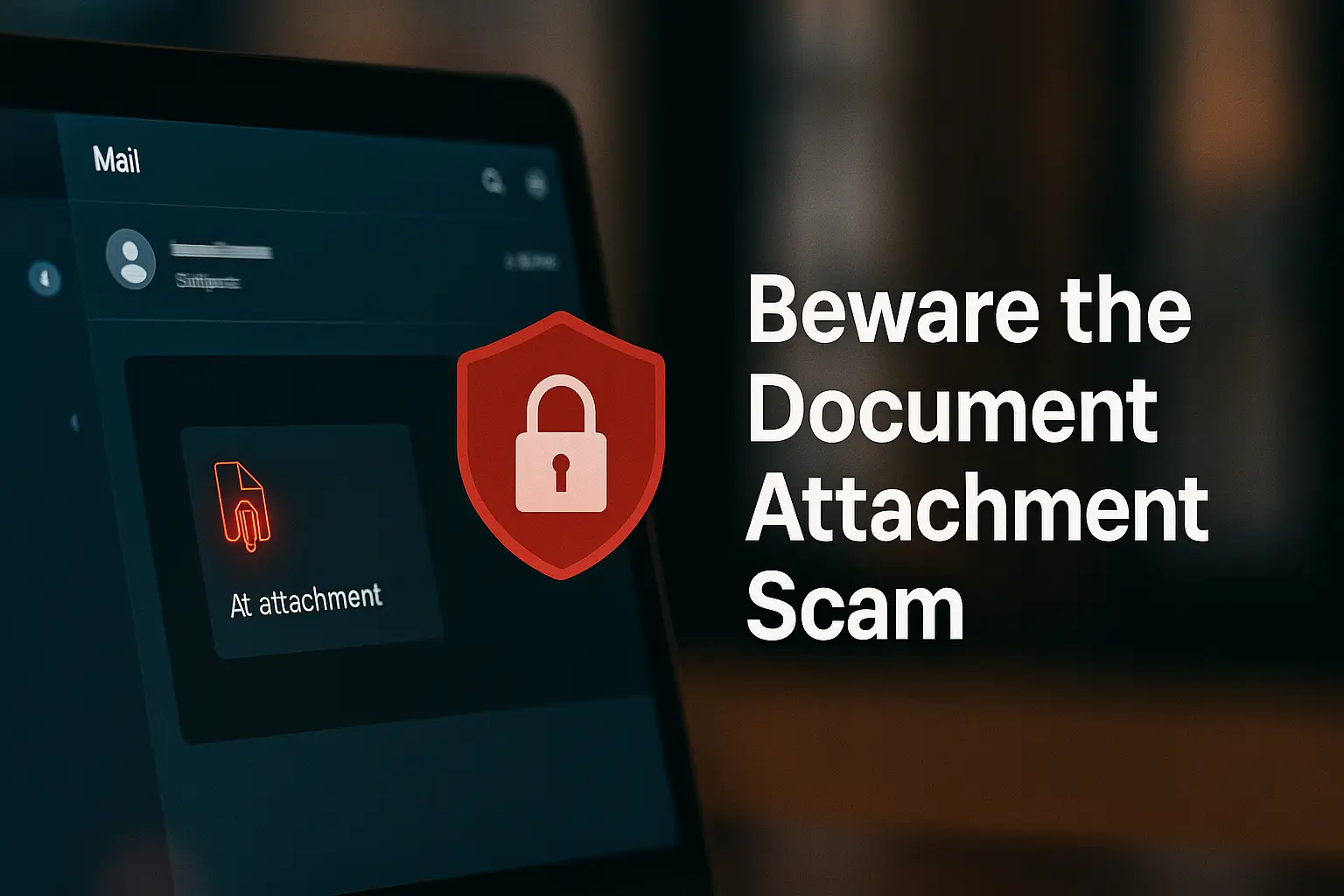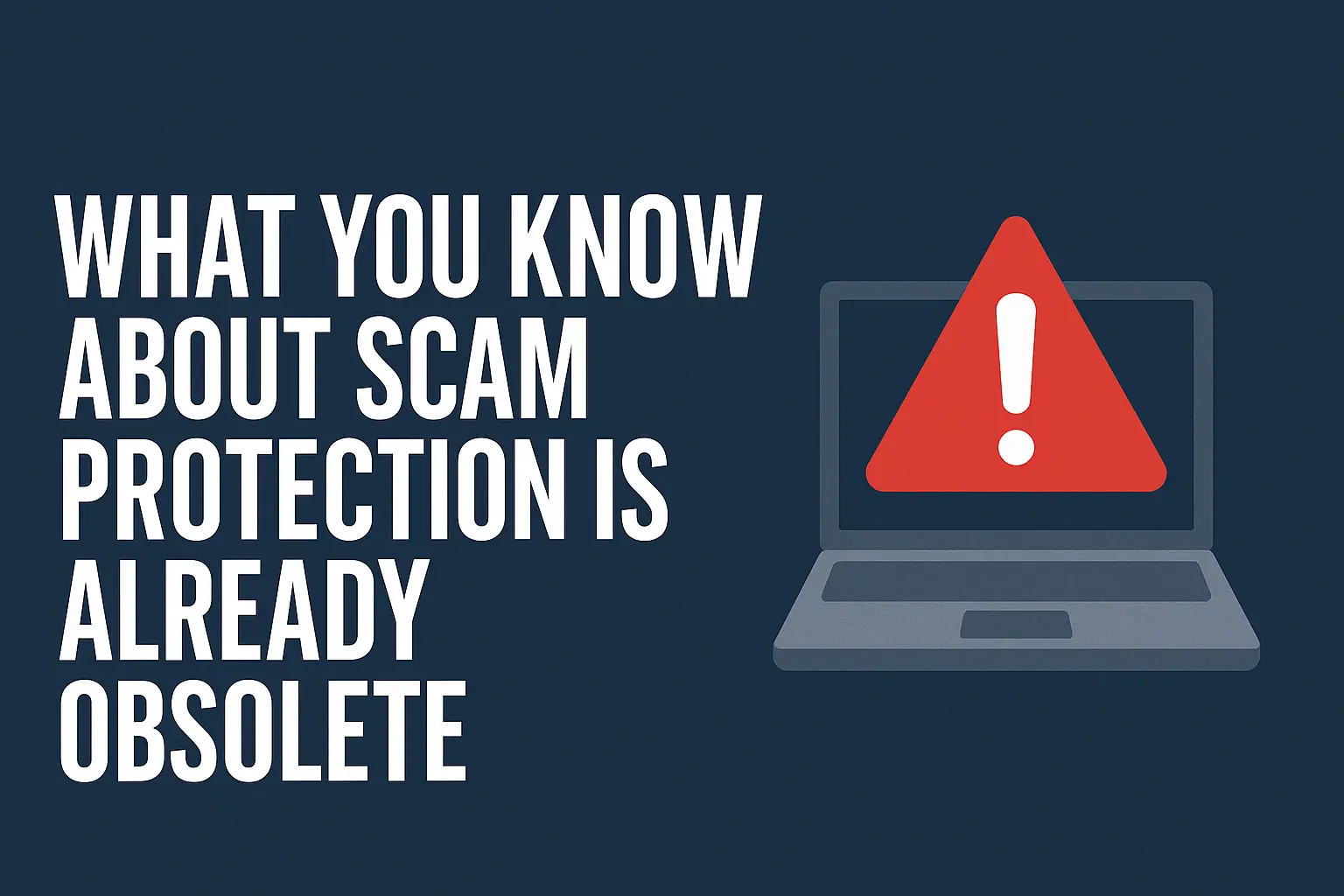There has been a growing rise in single document attachment scams spreading through email, text messages, and even chat apps. These scams are becoming increasingly dangerous because they exploit one of the strongest human instincts, curiosity. Students, business owners, and everyday individuals are all being targeted.
How Does the Scam Work?
The tactic is deceptively simple:
- Email Version: You may receive an email with nothing but a subject line and a file attached. The body of the email is often completely empty. The subject line could say something like:
- “Here is your receipt.”
- “Transaction confirmation”
- “Unpaid invoice”
- Or in some cases, the email won’t have a subject at all; the attachment itself carries the bait, with names like “mobilebankrefund.pdf” or “scholarshipfund.docx”.
- Text or Chat Version: The scammer may send you a short message with a file attached. On platforms like WhatsApp, Messenger, or Telegram, the file name often suggests urgency: “payment details”, “resume”, “invitation”, or “urgent notice”.
The scammer’s goal is not to convince you with a long message. Instead, they strip the communication down to the bare minimum, leaving you with unanswered questions that can only be “resolved” by opening the attachment.
Why Does This Scam Work?
This type of scam succeeds because it feeds on curiosity and urgency.
- Curiosity: When there is no explanation in the message, the brain starts filling in the blanks. “Did I miss a payment? Is this about my bank account? Could it be scholarship information?” The lack of details pushes the victim to open the file.
- Authority and Routine: Many people are used to receiving receipts, invoices, or financial notices as attachments. Students often expect scholarship or academic forms by email. This makes the scam look like “just another routine document”.
- Fear of Missing Out: Nobody wants to ignore an important financial refund, missed bill, or school-related notice. Scammers exploit this fear to push people into clicking.
What Happens If You Open the File?
Opening the attachment is the trap. The file may contain:
- Malware or ransomware that installs silently on your device.
- Phishing forms that ask you to “log in” to a fake website.
- Keyloggers that record your passwords and banking details.
- Hidden scripts that exploit software vulnerabilities.
Once you have opened the file, the damage may already be done. In many cases, just previewing the document is enough for the malicious code to activate.
Who Is at Risk?
Everyone is a target, but scammers often focus on:
- Students – with fake scholarship or refund documents.
- Small business owners – through fake invoices or payment requests.
- Employees – via bogus HR documents or payroll slips.
- General individuals – baiting with bank receipts or tax notices.
No one is immune because the scam relies on a universal weakness: curiosity.
How to Protect Yourself
- Never open unsolicited attachments – If you weren’t expecting a file, treat it as suspicious.
- Check the sender carefully – Look for misspelled addresses, unusual domains, or unknown numbers.
- Don’t rely on file names – A file called “invoice.pdf” could just as easily be a virus.
- Use preview with caution – Some systems still execute malicious code even in preview mode.
- Verify through another channel – If you think the document might be real, contact the sender directly (through official numbers or websites, not by replying to the suspicious message).
- Keep security software updated – Antivirus and anti-malware tools can block known threats.
- Educate your team or family – Awareness is one of the most effective defenses.



